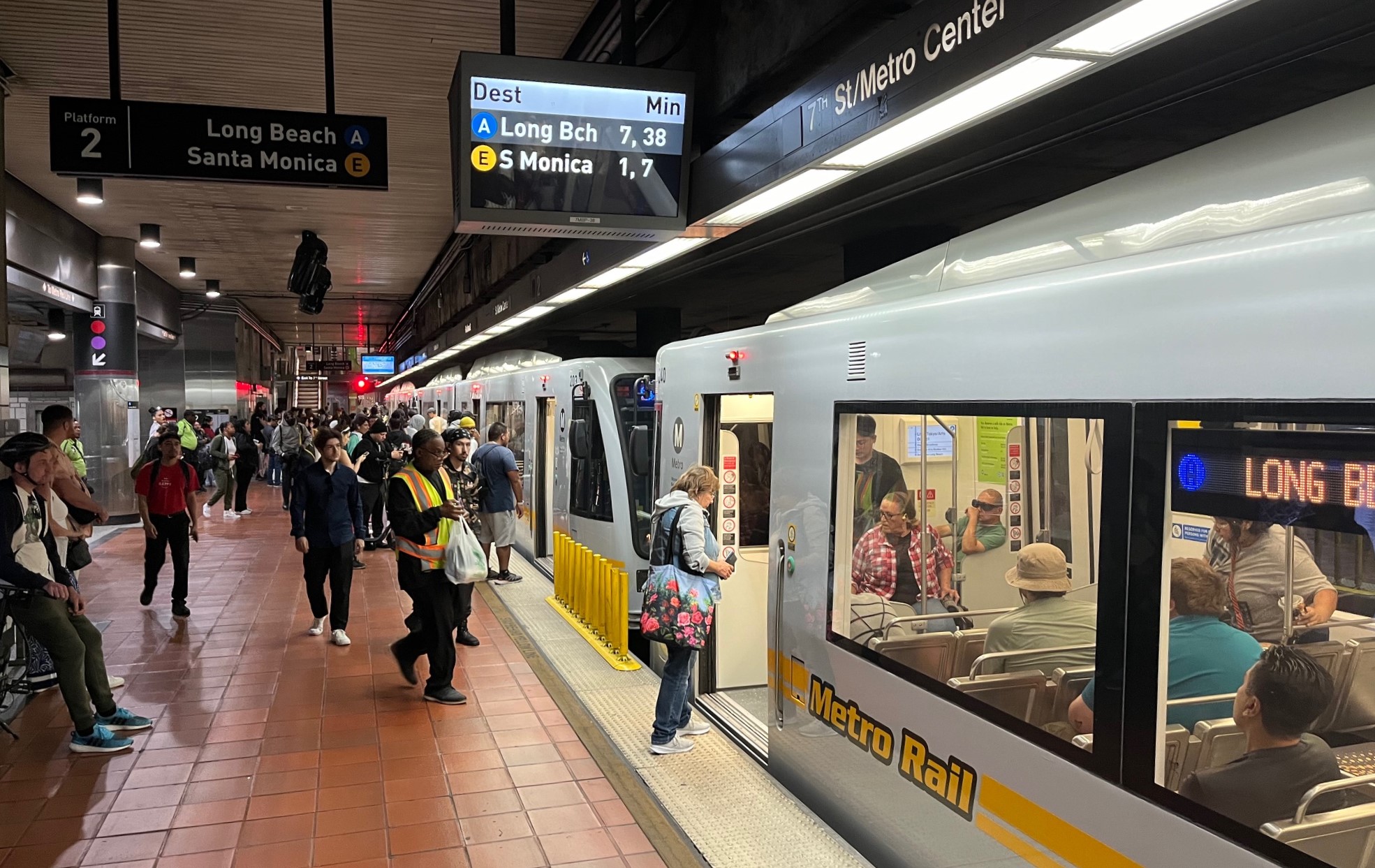 Really? Los Angeles doesn't spend much on bicycle or pedestrian infrastructure? Who knew could tell by looking at this beautiful street.
Really? Los Angeles doesn't spend much on bicycle or pedestrian infrastructure? Who knew could tell by looking at this beautiful street.For the second time in three months, a national coalition of bicycling and pedestrian advocates took a look at how federal funds are being spent on projects designed to keep cyclists and pedestrians safe as they move themselves from one place to another. For the second time in three months, Los Angeles was shown to be well behind the curve when it comes to spending money on "non-motorized transportation" as the state likes to call it, or "people powered movement" as those that transport themselves do.
First, there was Dangerous by Design. Yesterday, the Alliance for Bicycling and Walking released Bicycling and Walking in the United States: The 2010 Benchmarking Report which looked at the transportation spending habits of the nation's fifty-one largest cities. That includes Los Angeles, naturally, but also Long Beach. You can read national coverage of the report, prepared by D.C. Streetsblog's Elana Schor, here. But some of the local breakdown might surprise you.
In Los Angeles, twelve percent of all trips, not just commuter trips, but all trips, are done by either walking or cycling. That's well above the national average of 9.6%. However, thirty six percent of all crashes involve pedestrians or cyclists which is well above the national average. One reason for this? Los Angeles spends only 1.2% of its federal transportation dollars on bicycle or pedestrian infrastructure.
Aurisha Smolarski, the Campaign and Communications Director for the Los Angeles County Bicycle Coalition, noticed that the numbers don't add up for a city trying to be the greenest in America, "In Los Angeles, the dramatic disparity between bicycling and walking
levels of 12% versus the federal funding for bicycling and walking of
1.2% shows that the LA area needs a dramatic increase in funding for
bicycling and walking. LACBC would like to work with whatever entities to make this happen."
Despite the great strides Long Beach is making for cyclists, their numbers aren't very different from Los Angeles'. Twelve percent of all trips are done on bike or on foot. Twenty nine percent of all crashes involved "people powered movement" and Long Beach spends only .5% of its federal funds on cycling or pedestrian projects. That just goes to show you that the federal funding picture only tells part of the story and any city can change its streets if it has the political will. Long Beach is using local funds and state and private grants for many of the forward thinking projects such as the green-sharrowed lanes and its bicycle boulevard project.
These statistics are in-line with what we see statewide for California. For all of California, twelve percent of trips are being done by people powered movement, but only twenty percent of crashes involve cyclists or pedestrians. One and a half of a percent of transportation dollars are spent on "non-motorized transportation."
You can read a full breakdown of the transportation habits, crash data and spending priorities of all of the major U.S. cities by reading the report's fact sheet, here.




